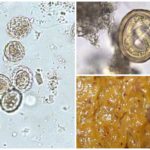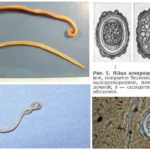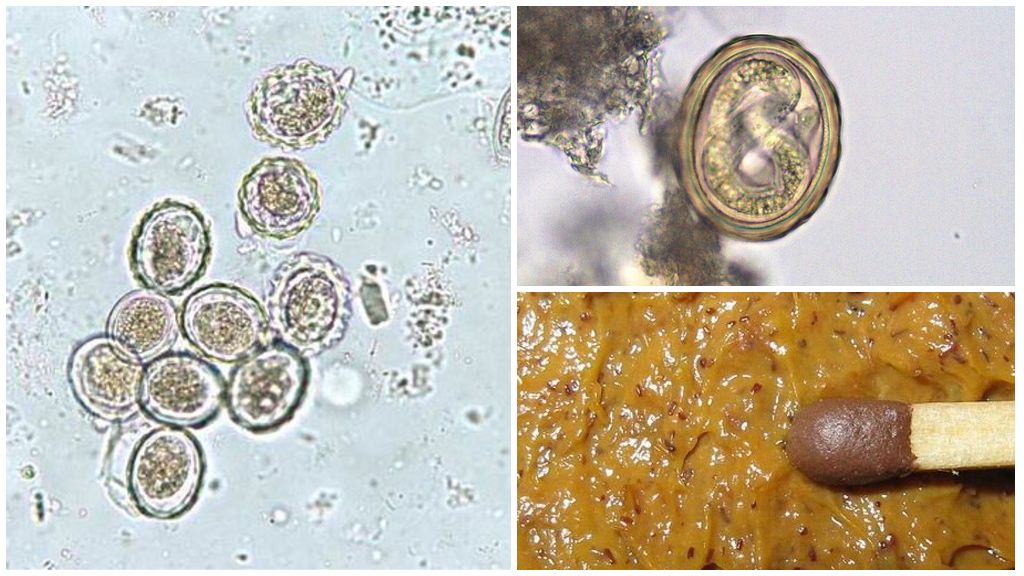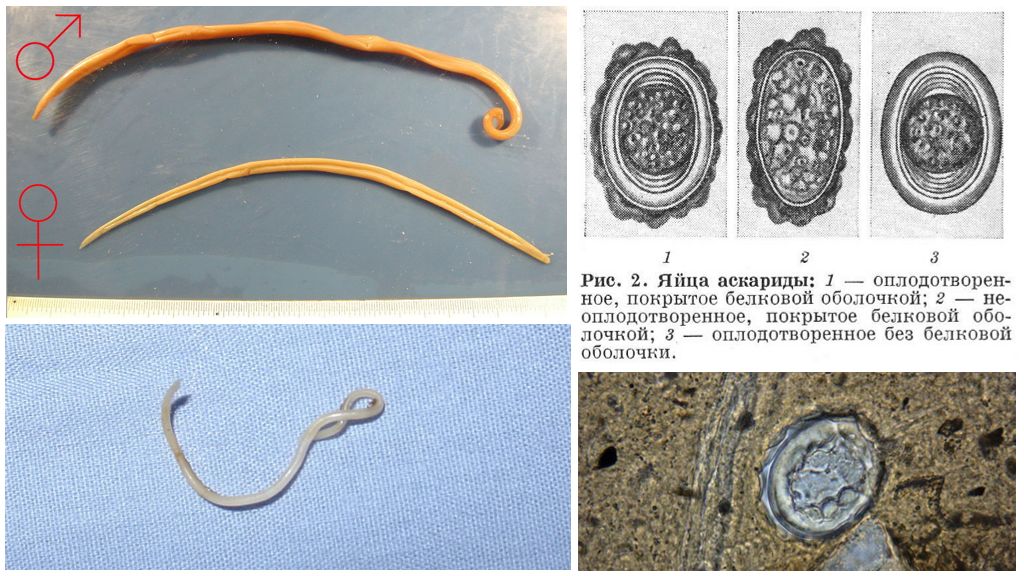Ascaris eggs
Content
- Ascaris eggs
- Roundworm and their eggs
In ascariasis infection and the life cycle of helminth development an important role is played by ascarid eggs. They differ in a special structure, adapted for a long stay in the environment. Human infection with worms begins exclusively with the ingestion of invasive units. They serve as a safe haven for the larvae before they reach favorable conditions for further development.
Breeding features of roundworm
Roundworm produces a huge number of eggs, which is associated with increased fertility of the female helminth. Almost the entire cavity of her body is filled with sexually mature, maturing and fertilized eggs. In the reproductive system of an adult individual, up to 25 million units are present at the same time, of which every day it lays up to 250 thousand. Such fecundity is due to low chances of survival.
Egg ripening
The female roundworm lays eggs in the intestinal lumen of an infected person. Most of them are fertilized, but there are unfertilized specimens. Those and others at this stage are not contagious, because for further maturation they need access to oxygen. Otherwise, the eggs do not pass into the invasive (infectious) stage. Favorable conditions for their maturation:
- habitat - loose, porous soil in tropical, subtropical, temperate latitudes;
- air temperature - in the range from 15 to 25 ° C (outside the range, eggs die or go into anabiosis with slowing down of cellular processes);
- humidity - no more than 8-10% (embryos do not survive in dry conditions, do not live in desert and semi-desert zones);
- oxygen - unlike adult individuals that die in an aerobic environment, ascarid eggs and larvae can develop only in the presence of a sufficient amount of oxygen.
The invasive stage begins when the helminth embryos with the feces of a sick person enter the soil with suitable conditions for development. For 20 days, eggs live in the environment. At this time, the larva is formed in them by cell division from the blastula. After 30-40 days, it acquires mobility and becomes ready for invasion (infection).
On a note!
Ascaris eggs can usually be in their habitat for up to 7 years. When environmental conditions change, they fall into a state of anabiosis with inhibition of life processes. In this position, the larvae retain infectious danger for 12 years.
Structural features
Roundworm adapted for living in the environment. Their five-layer membrane is designed to protect against temperature changes, mechanical effects, dissolution of gastric and intestinal enzymes. They are oval, yellow or brown. The size of the roundworm egg at an early stage is up to 7 microns. Shell structure:
- Outdoor protein - resistant to external factors, corresponds to the color of human feces.
- Medium - a three-layer thick protein, characterized by high strength and elasticity.
- Internal - thin, lipid, performs trophic, buffer functions for a growing embryo.
Fertilized eggs
They are characterized by large sizes - up to 50-65 microns, ovoid or spherical shape. The outer shell has a bumpy translucent structure, the inner one is smooth and elastic. They protect the spherical granular blastomere from destructive external influence.
On a note!
In fecal masses, eggs are translucent, which makes their detection and identification difficult. When it enters the soil, the shell loses its transparency, acquires a more dense structure.
Unfertilized eggs
In the process of mating, not all eggs in the body of the female are fertilized. Some of them remain unchanged, but also leave the uterus and penetrate the feces. Unfertilized ascaris eggs consist of only five shells and do not contain a blastomere.
They have an irregular, longitudinal-oval, curved shape.Their outer shell is much thinner, lighter, more transparent than the fertilized ones. Sizes up to 35-45 microns. They do not form an embryo, so when ingested, they do not cause infection with ascariasis. They are almost impossible to detect in the feces of a sick person. In the laboratory, it is possible to see the eggs under ultraviolet light, which allows us to diagnose the disease in a timely manner.









